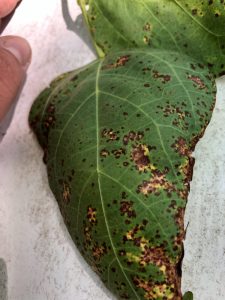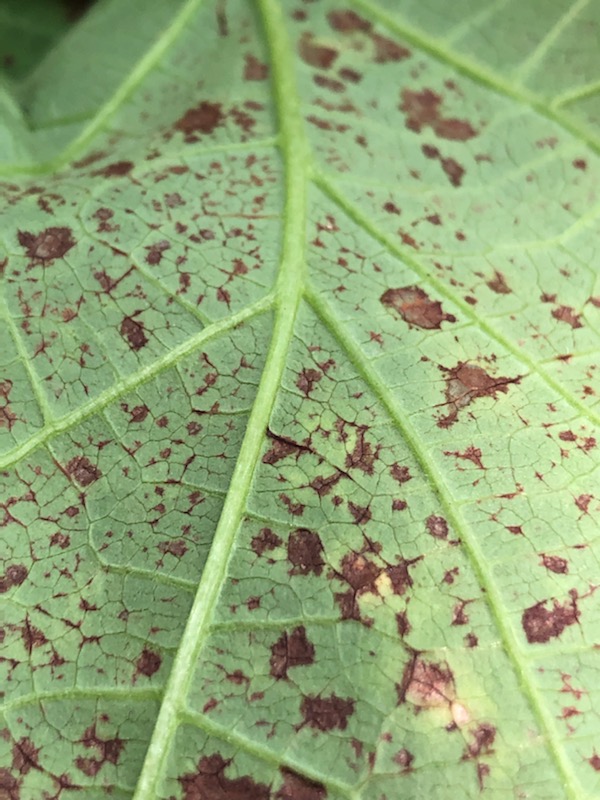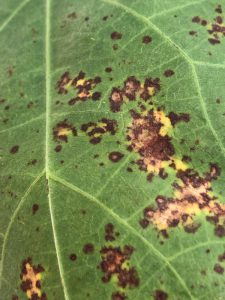
As snap bean season is winding down and daytime temperatures regularly approach the lower 90s, common bacterial blight is making its presence known. In March or April, when snap bean plants are young and full of fresh growth, vegetable gardeners would never guess that their leafy plants could turn spotty and ugly during harvest time.
That is exactly what happens when daytime temperatures steadily remain in the mid-80s and low-90s, and nighttime temperatures are in the lower 70s. The perfect storm for this bacterial disease occurs when these temperatures combine with afternoon and evening showers, creating sticky, humid nights perfect for the proliferation of the causal agent, Xanthomonas campestris pv. Phaseoli.
Common bacterial blight begins showing up on older leaves first and then slowly spreads to younger growth and pods. If plants are left untreated, disease progression will continue if rainy nights and warm daytime temperatures continue. If weather conditions are consistently dry, daytime temperatures are above 90 and overhead irrigation is limited to mornings or eliminated, the blight will stop progressing to new growth. This disease may also be transmitted by insects.

If conditions favorable to common bacterial blight exist, preventative sprays of copper fungicide will work to

reduce infection and damage to crop, but there is no product to cure what has already been infected.
One of the best techniques available to manage common bacterial blight in beans is to rotate crops regularly so that legumes are not grown on the same ground year after year. This is easily accomplished in a diverse home garden with different raised beds or garden plots.
Bacterial spot can be managed with cultural or chemical controls to mitigate crop damage if observed early.
To learn more about common bacterial blight of bean follow these links to the NFREC Plant Pathology U-Scout page or read IFAS Extension PUBLICATION #PP-62
 0
0
